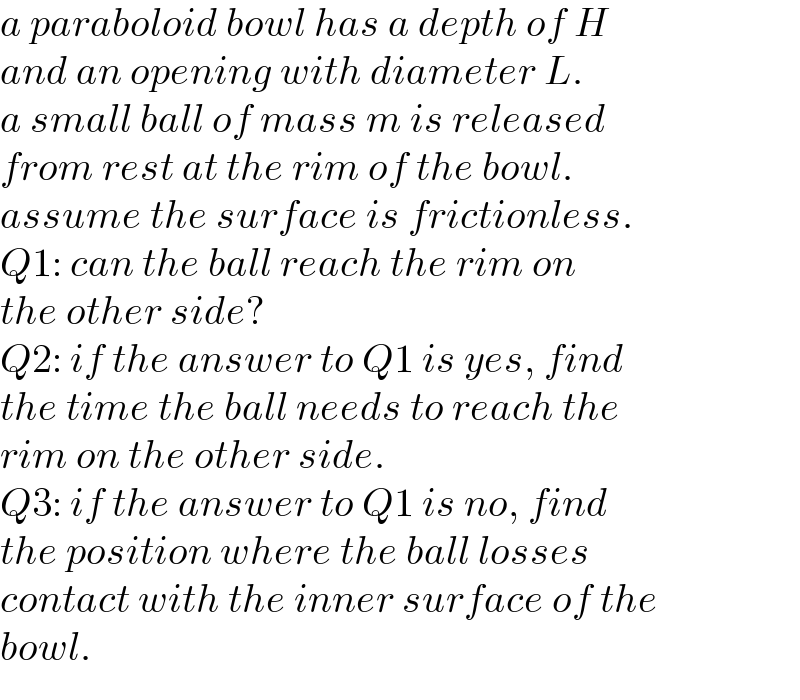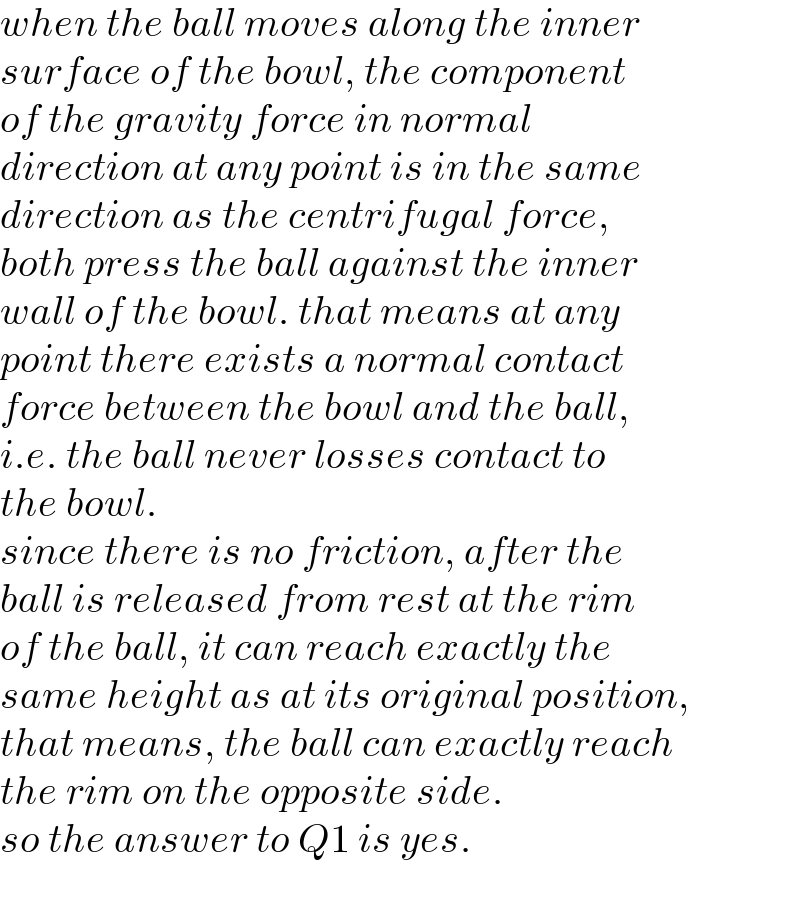
Question and Answers Forum
Question Number 127811 by mr W last updated on 02/Jan/21

Commented by mr W last updated on 02/Jan/21

Answered by mr W last updated on 03/Jan/21

Commented by mr W last updated on 03/Jan/21

Commented by mr W last updated on 03/Jan/21
![let R=(L/2)=radius of opening y=H((x/R))^2 let η=(H/R), ξ=(x/R)∈[−1,1] y′=2H(x/R^2 )=2ηξ y′′=2(H/R^2 )=((2η)/R) radius of curvature r=(([1+(y′)^2 ]^(3/2) )/(∣y′′∣)) ⇒r=(((1+4η^2 ξ)^(3/2) R)/(2η)) (1/2)mv^2 =mg(H−y)=mg(H−Hξ^2 ) ⇒v^2 =2gH(1−ξ^2 ) ⇒v=(√(2gH(1−ξ^2 ))) ds=(√(1+(y′)^2 ))dx=R(√(1+4η^2 ξ^2 ))dξ dt=(ds/v)=(R/( (√(2gH))))(√((1+4η^2 ξ^2 )/(1−ξ^2 )))dξ the time the ball needs to move from rim to rim is T. T=(R/( (√(2gH))))∫_(−1) ^1 (√((1+4η^2 ξ^2 )/(1−ξ^2 )))dξ =((2R)/( (√(2gH))))∫_0 ^1 (√((1+4η^2 ξ^2 )/(1−ξ^2 )))dξ ⇒T=(√((2H)/g))×(1/η)∫_0 ^1 (√((1+4η^2 ξ^2 )/(1−ξ^2 )))dξ=k(√((2H)/g)) with k=(1/η)∫_0 ^1 (√((1+4η^2 ξ^2 )/(1−ξ^2 )))dξ note: (√((2H)/g)) is the time for free fall of the ball from height H. it′s obvious that k>2. an exact formula for k is not possible. examples: η=(H/R)=1 ⇒k≈2.635184 η=(H/R)=2 ⇒k≈2.203569 η=(H/R)=4 ⇒k≈2.061882 η=(H/R)=10 ⇒k≈2.012202 tan θ=(dy/dx)=2ηξ N=mg cos θ+m(v^2 /r) (N/(mg))=(1/( (√(1+4η^2 ξ^2 ))))+((4η^2 (1−ξ^2 ))/((1+4η^2 ξ^2 )^(3/2) )) =(1/( (√(1+4η^2 ξ^2 ))))+((4η^2 +1−(1+4η^2 ξ^2 ))/((1+4η^2 ξ^2 )^(3/2) )) ⇒(N/(mg))=((1+4η^2 )/((1+4η^2 ξ^2 )^(3/2) )) >0 at ξ=±1: N_(min) =((mg)/( (√(1+4η^2 )))) at ξ=0: N_(max) =(1+4η^2 )mg](Q127923.png)
